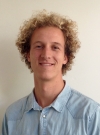
Contributions
Abstract: P1255
Type: Poster
Abstract Category: Therapy - disease modifying - Risk management for disease modifying treatments
Background: Approximately 30% of natalizumab-associated progressive multifocal leukoencephalopathy (NTZ-PML) patients present with imaging findings suggestive of inflammation, such as contrast-enhancement, at the time of PML diagnosis. The histopathological background and clinical relevance of these inflammatory PML lesions are not understood. After the diagnosis of PML and natalizumab discontinuation, these inflammatory lesions have to be differentiated from inflammation related to immune reconstitution inflammatory syndrome (IRIS) lesions.
Objective: To investigate the imaging characteristics of inflammatory PML lesion at diagnosis and during follow-up and to determine whether these inflammatory lesions are linked to inflammatory lesions seen at PML-IRIS stage.
Methods: We screened 46 of our local and referred NTZ-PML patients for signs of inflammation on brain MRI (contrast enhancement, signs of mass effect and/or edema, and perivascular T2 lesions) at PML diagnosis. Contrast-enhancement was further classified according to location (center of the PML lesions, border of the PML lesions, outside of the PML lesions either with or without a perivascular spread) and the enhancement pattern (punctuate, homogeneous, patchy). All follow-up MRI scans including those at the PML-IRIS were analyzed.
Results: Thirteen patients showed signs of inflammation at PML diagnosis, of whom ten had follow-up MRIs at the time of PML-IRIS available. Contrast-enhancement was the leading imaging sign in inflammatory PML (92.3%) and PML-IRIS (100%), mostly with a patchy appearance in the periphery of the lesions. The most relevant discriminative factor was swelling with mass effect, exclusively being present at the PML-IRIS (60%) but not in the inflammatory PML stage. Signs of perivascular inflammation with perivascular T2 lesions were more frequent present at the PML-IRIS stage (80%) compared to the inflammatory PML stage (46.%). Nine inflammatory PML patients (90%) showed similar patterns of inflammation at PML-IRIS stage as at diagnosis of inflammatory PML.
Conclusion: Inflammatory PML lesions share the same imaging characteristics as PML-IRIS lesion. In the majority of patients, inflammatory PML lesions are linked to PML-IRIS lesions with respect to inflammation evolution during follow-up. This suggests a shared pathological mechanism of inflammation such as cellular immune response against the JC virus, even at the time of PML diagnosis.
Disclosure: Potential conflict of interest
MTW, SF, CT and JdG do not report any competing interest.
JvE has received consultancy fees from Biogen, Merck-Serono, Teva, Novartis, and Sanofi.
RRMH received honoraria as consultant on scientific advisory boards from Merck Serono, Biogen, Genzyme Sanofi and Teva, research funding from Merck Serono and Biogen, and speaker honoraria from Sanofi-Genzyme and Novartis.
JK has received consultancy fees from Merck-Serono, Teva, Biogen, Genzyme and Novartis.
MPW has received consultancy fees from Biogen and Roche.
Abstract: P1255
Type: Poster
Abstract Category: Therapy - disease modifying - Risk management for disease modifying treatments
Background: Approximately 30% of natalizumab-associated progressive multifocal leukoencephalopathy (NTZ-PML) patients present with imaging findings suggestive of inflammation, such as contrast-enhancement, at the time of PML diagnosis. The histopathological background and clinical relevance of these inflammatory PML lesions are not understood. After the diagnosis of PML and natalizumab discontinuation, these inflammatory lesions have to be differentiated from inflammation related to immune reconstitution inflammatory syndrome (IRIS) lesions.
Objective: To investigate the imaging characteristics of inflammatory PML lesion at diagnosis and during follow-up and to determine whether these inflammatory lesions are linked to inflammatory lesions seen at PML-IRIS stage.
Methods: We screened 46 of our local and referred NTZ-PML patients for signs of inflammation on brain MRI (contrast enhancement, signs of mass effect and/or edema, and perivascular T2 lesions) at PML diagnosis. Contrast-enhancement was further classified according to location (center of the PML lesions, border of the PML lesions, outside of the PML lesions either with or without a perivascular spread) and the enhancement pattern (punctuate, homogeneous, patchy). All follow-up MRI scans including those at the PML-IRIS were analyzed.
Results: Thirteen patients showed signs of inflammation at PML diagnosis, of whom ten had follow-up MRIs at the time of PML-IRIS available. Contrast-enhancement was the leading imaging sign in inflammatory PML (92.3%) and PML-IRIS (100%), mostly with a patchy appearance in the periphery of the lesions. The most relevant discriminative factor was swelling with mass effect, exclusively being present at the PML-IRIS (60%) but not in the inflammatory PML stage. Signs of perivascular inflammation with perivascular T2 lesions were more frequent present at the PML-IRIS stage (80%) compared to the inflammatory PML stage (46.%). Nine inflammatory PML patients (90%) showed similar patterns of inflammation at PML-IRIS stage as at diagnosis of inflammatory PML.
Conclusion: Inflammatory PML lesions share the same imaging characteristics as PML-IRIS lesion. In the majority of patients, inflammatory PML lesions are linked to PML-IRIS lesions with respect to inflammation evolution during follow-up. This suggests a shared pathological mechanism of inflammation such as cellular immune response against the JC virus, even at the time of PML diagnosis.
Disclosure: Potential conflict of interest
MTW, SF, CT and JdG do not report any competing interest.
JvE has received consultancy fees from Biogen, Merck-Serono, Teva, Novartis, and Sanofi.
RRMH received honoraria as consultant on scientific advisory boards from Merck Serono, Biogen, Genzyme Sanofi and Teva, research funding from Merck Serono and Biogen, and speaker honoraria from Sanofi-Genzyme and Novartis.
JK has received consultancy fees from Merck-Serono, Teva, Biogen, Genzyme and Novartis.
MPW has received consultancy fees from Biogen and Roche.


